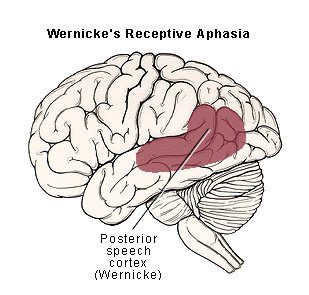Wernicke's aphasia
From Psy3241
(Difference between revisions)
| Line 1: | Line 1: | ||
[[Category:Neuropsychological syndromes]] | [[Category:Neuropsychological syndromes]] | ||
| - | Wernicke's aphasia (also known as fluent aphasia) is a type of aphasia in which significant damage has been done to [[Wernicke's area]] in the posterior superior temporal gyrus of a person's dominant hemisphere. It was first discovered by [[Carl Wernicke]] and knowledge was significantly advanced by [[Norman Geschwind]]. [[Image:page12a.jpg]] | + | Wernicke's aphasia (also known as fluent aphasia) is a type of aphasia in which significant damage has been done to [[Wernicke's area]] in the posterior superior temporal gyrus of a person's dominant hemisphere. It was first discovered by [[Carl Wernicke]] and knowledge was significantly advanced by [[Norman Geschwind]]. |
| + | |||
| + | [[Image:page12a.jpg]] | ||
== External Link == | == External Link == | ||
[http://www.youtube.com/watch?v=aVhYN7NTIKU Video of patient with Wernicke's aphasia] | [http://www.youtube.com/watch?v=aVhYN7NTIKU Video of patient with Wernicke's aphasia] | ||
Revision as of 01:17, 29 April 2008
Wernicke's aphasia (also known as fluent aphasia) is a type of aphasia in which significant damage has been done to Wernicke's area in the posterior superior temporal gyrus of a person's dominant hemisphere. It was first discovered by Carl Wernicke and knowledge was significantly advanced by Norman Geschwind.

